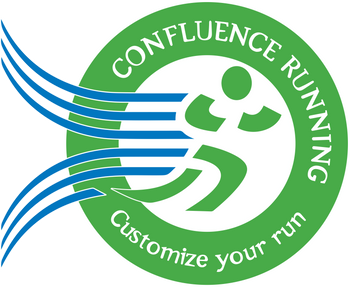Maximize Workouts with Heart Rate Zone Training: A Complete Guide

Overview of Heart Rate Training Zones: Maximizing Your Fitness Potential
Heart rate training zones are a powerful way to monitor exercise intensity and tailor workouts. By focusing on specific heart rate targets, athletes and fitness enthusiasts can develop well-rounded training plans that improve aerobic capacity, enhance recovery, and boost overall performance. This lecture explores fundamental principles of heart rate training, discussing how to determine individual zones and apply them effectively.
Understanding Heart Rate Training
Heart rate training shifts focus from pace- or distance-based goals to physiological effort. By using a heart rate monitor—either a chest strap or a wrist-based device—you can track how hard your body is working in real time. This approach allows you to:
-
Prevent overtraining by ensuring you're not pushing beyond your cardiovascular limits.
-
Optimize recovery workouts by staying in low-intensity zones.
-
Build endurance by maintaining effort within your targeted aerobic zones.
-
Improve speed and power through high-intensity intervals in anaerobic zones.
Key Metrics
-
Maximum Heart Rate (MHR): Often estimated using the formula 220 - Age for the general population. However, well-trained athletes may have higher MHRs than this formula predicts.
-
Resting Heart Rate (RHR): The heart rate upon waking or lying in bed. A lower RHR typically signals a stronger cardiovascular system.
-
Heart Rate Zones: Ranges of effort based on a percentage of your MHR. Each zone corresponds to specific physiological benefits.

The Eight Heart Rate Training Zones
Training zones can be divided into aerobic (Zones 1-4) and anaerobic (Zones 5a-5c) segments. Note that the exact beats per minute (BPM) will vary depending on your individual MHR.
-
Zone 1 – Recovery (120-140 BPM)
-
Goal: Low-intensity exercise to promote blood flow, reduce soreness, and prepare for higher-intensity sessions.
-
Recommended Workouts: Easy jogs, gentle swims, relaxed cycling.
-
Duration: Longer, continuous sessions.
-
-
Zone 2 – Endurance (140-157 BPM)
-
Goal: Develop aerobic base with moderate, steady-state activity.
-
Recommended Workouts: Long runs, bike rides, swims.
-
Duration: 1-3+ hours.
-
-
Zone 3 – Tempo (157-170 BPM)
-
Goal: Increase sustainable speed; push comfortably hard.
-
Recommended Workouts: Tempo runs, pace-based sets in swimming, moderate cycling intervals.
-
Duration: 20-40 minutes at tempo pace.
-
-
Zone 4 – Sub-Threshold (170-179 BPM)
-
Goal: Raise the aerobic ceiling; train close to lactic threshold.
-
Recommended Workouts: Hard efforts for 10-20 minutes, often seen in race simulations.
-
Duration: Continuous intervals to mimic race intensity.
-
Read More About Exercise Science
The Science of Metabolism: Unlocking Peak Athletic Performance
Maximize Workouts with Heart Rate Zone Training: A Complete Guide
Wrapping Up the Exercise Science of Training Plans
Anaerobic Zones
-
Zone 5a – Super Threshold (179-186 BPM)
-
Goal: Cross the lactic threshold for 1-2 minute efforts.
-
Recommended Workouts: Short, high-intensity intervals (e.g., 400m running, 100m swimming).
-
Rest Intervals: ~1-2 minutes to allow partial recovery.
-
-
Zone 5b1 & 5b2 – VO2 Max (186-194 BPM)
-
Goal: Maximize oxygen uptake for power and speed.
-
Recommended Workouts: 30-second to 90-second all-out intervals with adequate rest.
-
Rest Intervals: 2-4 minutes for full ATP/CP replenishment.
-
-
Zone 5c – Max/Sprint (193+ BPM)
-
Goal: Peak intensity for ultra-short bursts (10-30 seconds).
-
Recommended Workouts: Max sprint efforts, explosive intervals.
-
Rest Intervals: Extended rest to fully recover.
-
Integrating Heart Rate Zones into Your Training Plan
-
Determine Your MHR: Use lab testing, a controlled fitness test, or an estimated formula to find a baseline.
-
Establish Zones: Set BPM targets for each zone based on your MHR.
-
Mix & Match Zones: Vary workouts (e.g., a long endurance day in Zone 2, a tempo run in Zone 3, interval sprints in Zone 5a) throughout the week.
-
Track Recovery: Incorporate low-intensity (Zone 1) sessions or rest days to facilitate adaptation.
-
Monitor Progress: As aerobic fitness improves, your RHR may lower, and you may sustain higher intensities longer.

How Heart Rate Training Improves Fitness
-
Injury Prevention: By monitoring heart rate, athletes can avoid pushing too hard too often, reducing overtraining risk.
-
Enhanced Efficiency: Targeted zones help you build endurance, power, and speed more systematically.
-
Better Recovery: A robust aerobic base replenishes energy stores quickly, aiding post-workout recovery for all types of athletes.
-
Personalized Training: Heart rate training adapts to your unique physiology, ensuring each workout is appropriately challenging.
Sample Weekly Training Plan
| Day | Focus | Zone | Duration |
|---|---|---|---|
| Monday | Recovery / Easy Jog | Zone 1 (Recovery) | 30-45 min |
| Tuesday | Long Endurance Run | Zone 2 (Endurance) | 60-90 min |
| Wednesday | Tempo / Interval Workout | Zone 3-4 (Tempo/SubT) | 30-40 min intervals |
| Thursday | Rest or Active Recovery | Zone 1 (Recovery) | 20-30 min |
| Friday | VO2 Max Intervals | Zone 5b (VO2 Max) | Short intervals |
| Saturday | Long Ride / Swim | Zone 2-3 | 1-3 hours |
| Sunday | Short Sprints | Zone 5c (Max) | 10-15 sec sprints |
Key Takeaways
-
Assess Your Baseline: Know your maximum heart rate and resting heart rate.
-
Use Zones Strategically: Assign each workout a specific zone to develop aerobic base, muscular endurance, or speed.
-
Progress Gradually: Watch for signs of overtraining, adjusting intensity as needed.
-
Track Results: Monitor changes in performance and RHR to evaluate cardiovascular fitness gains.
-
Customize & Evolve: Adapt zones as your fitness improves, ensuring workouts remain challenging yet achievable.
By understanding heart rate training zones and incorporating them into a well-rounded training plan, individuals can enhance their aerobic capacity, recovery, and overall athletic performance. Whether prepping for a marathon, cycling event, or simply seeking better fitness, heart rate-based training offers a powerful tool for targeted improvement.
Q&A Section: How Heart Rate Training Helps Fitness & Health
Q1: Why should I train by heart rate instead of pace or distance?
A: Heart rate training ensures you’re working at the right intensity for your current fitness level, preventing overtraining and aligning workouts with your cardiovascular capacity.
Q2: How do I find my maximum heart rate?
A: A common formula is 220 minus your age, but testing in a lab or via a controlled workout can give a more accurate measure—especially if you’re well-trained.
Q3: What if my heart rate monitor reads unexpectedly high or low?
A: Some individuals have naturally higher or lower max heart rates, and wrist-based monitors may be less accurate. Double-check with a chest strap or professional test.
Q4: How often should I train in each zone?
A: It depends on your goals, but a balanced approach includes recovery (Zone 1), endurance (Zone 2), tempo (Zone 3), and harder efforts (Zone 4-5) throughout the week.
Q5: Can heart rate training benefit strength athletes, too?
A: Absolutely. A stronger cardiovascular base aids recovery between heavy sets, improves overall work capacity, and complements power and muscle gains.
Q6: What is the lactic threshold, and why does it matter?
A: The lactic or anaerobic threshold is the point where your body shifts from aerobic to anaerobic energy. Training around this threshold boosts endurance and high-intensity performance.
Q7: How do I use heart rate training for recovery days?
A: Keep BPM within Zone 1 (low intensity) to promote blood flow without stressing the body, accelerating muscle repair and reducing fatigue.
Q8: Do I need expensive equipment for heart rate training?
A: A basic heart rate monitor (wrist-based or chest strap) suffices. Wrist-based sensors are convenient, but chest straps often provide more accuracy.
Q9: Can heart rate zones change over time?
A: Yes. As your fitness improves, you may sustain higher intensities longer, and your resting heart rate might decrease, requiring updated zone calculations.
Q10: How do I avoid overtraining while using heart rate zones?
A: Follow a structured plan that balances high-intensity days with recovery or Zone 2 endurance sessions. Monitor resting heart rate and adapt intensity as needed.
Heart Rate Training for Running, Cycling, and Triathlon Tags
heart rate training zones, aerobic vs anaerobic, heart rate monitor, max heart rate, resting heart rate, running intensities, training intensity zones, cardio workout planning, heart rate based exercise, zone 2 training, recovery workouts, tempo runs, sub threshold training, vo2 max intervals, sprint interval training, heart rate variability, workout performance metrics, lactic threshold, endurance vs speed, exercise physiology


